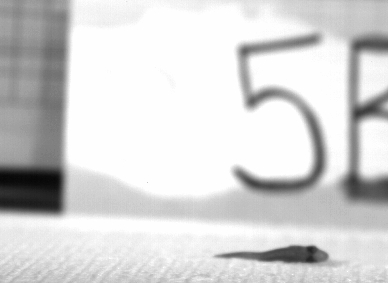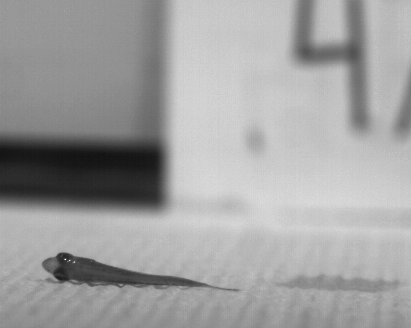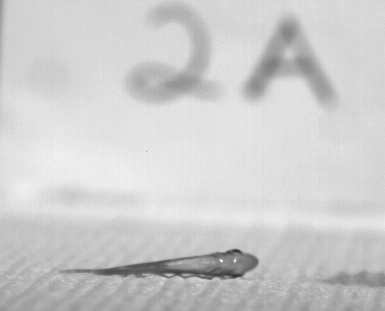
Mangrove rivulus, Kryptolebias marmoratus, are champions at jumping on land. They use a characteristic “tailflip” movement pattern, where the anterior body is curled back over the tail, and then the body is launched into the air by straightening the vertebral column and pressing the caudal peduncle and tail against the ground.
The video was recorded at 500 frames per second with a Fastec TroubleShooter HR camera.
Trouble loading video? Click here to view the animation in a separate page.
Kryptolebias marmoratus tailflip

Juvenile largemouth bass, Micropterus salmoides, are similarly sized to adult K. marmoratus, but are not nearly as proficient at tailflipping as rivulus.
Often they curl up into an appropriate stage 1 shape from which they should be able to launch off of the tail an into the air, but fall over instead.
Video recorded as described above.
Trouble loading video? Click here to view the animation in a separate page.
Juvenile Micropterus salmoides attempts a tailflip

Other times the juvenile bass will fail to get the center of mass up and over the tail, resulting in the body being launched vertically rather than vertically and horizontally.
Video recorded as described above.
Trouble loading video? Click here to view the animation in a separate page.
Another Micropterus tailflip attempt

Sometimes juvenile bass will perform a behavior quite distinct from a tailflip, which we have termed a “headstand jump.” Here, the bass brings the head and tail together, curving the body toward the substrate, and the center of mass is displaced upwards by that motion. Note the resemblance to an aquatic C-start.
Trouble loading video? Click here to view the animation in a separate page.
Micropterus “headstand jump”



